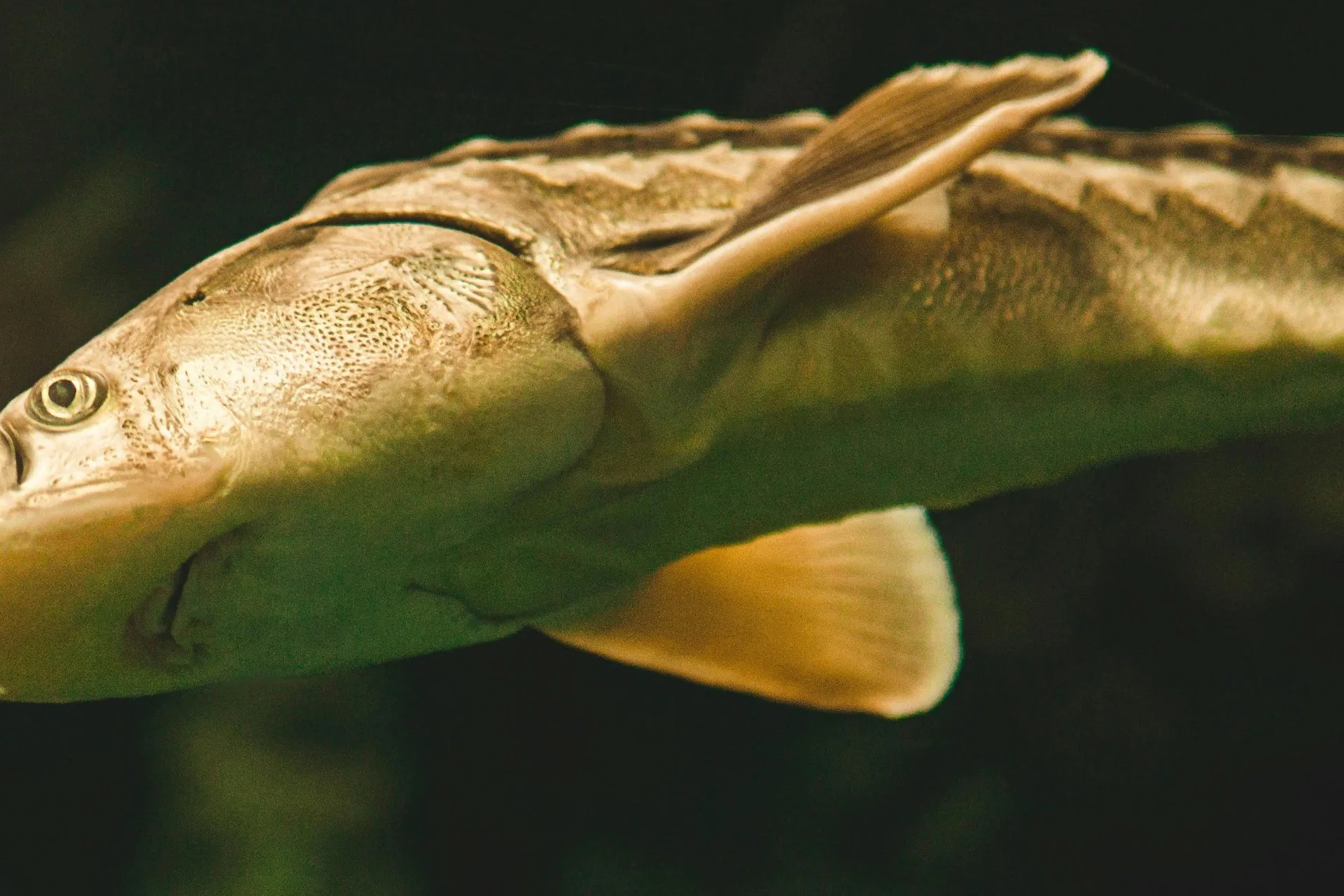BRETT FRENCH | bfrench@billingsgazette.com
This summer in the Missouri River below Fort Peck Dam fisheries biologists confirmed two pallid sturgeon females spawned. Days later downstream, researchers captured what may be the baby pallids, called larvae.
Genetic testing must be completed to ensure the tiny specimens were indeed offspring of a species that dates back to the age of the dinosaurs and is now listed as endangered.
Spawned near Wolf Point
The first fish spawned between June 30 and July 31, close to the Wolf Point area of the Missouri River, according to Pat Braaten, a research fish biologist at the Columbia Environmental Research Center’s Fort Peck Field Research Station.
Almost a month later, the other female spawned between July 30 and Aug. 18, also near Wolf Point.
“It’s later than what we normally see on the Yellowstone River and in other areas where the pallids are spawning,” Braaten said of the second female.
Warm and slow is good
The larval fish were captured about 160 to 170 miles downstream near the Missouri’s confluence with the Yellowstone River.
“That might be right on the fringe of where you might expect some embryos to survive,” Braaten said.
That’s because after the fish hatch they drift downstream. During this stage of their life, warmer water is important as it speeds their development. Growing quickly is essential since at the end of this stretch of the Missouri River is Lake Sakakawea, a large North Dakota reservoir.
If the fish haven’t developed enough by the time they reach the reservoir’s dead pool, studies have shown they die in the oxygen-poor environment at the head of the lake.
In addition to water temperature, the water’s speed also factors into whether the fish live or die. If water flows are fast, they have less time to develop before reaching the lake. So warm and slow flows are ideal.
“If there’s a naturally produced fish picked up this year, that will be huge news, no doubt,” Braaten said.
Fin clips are taken of the tiny fish that are then genetically analyzed, since at this early stage of development pallid sturgeon look a lot like their shovelnose sturgeon cousins and even paddlefish. Results of the testing should be available later this fall, Braaten speculated.
Hitting sexual maturity
The two females that spawned this summer were hatchery-raised fish from the 2001 year class, so 24 years old.
In 1998, the first stocking of pallid sturgeon placed 295 1-year-old fish in the Missouri River below Fort Peck Dam. Another 485 were released in the lower Yellowstone River. More than 9,400 fish were stocked between 2000 and 2004.
Although males can reach maturity in five to 10 years, it can take 15 to 20 years before females are mature enough to reproduce.
“These fish are starting to hit sexual maturity,” Braaten said. “There’s getting to be more and more of them, and that’s just increasing the sample size for research and being able to study and determine where and when and if they spawn.”
A fish that successfully spawned in the Missouri River last year was also of hatchery origin. The first verified successful spawn in the stretch of water was in 2011, a high-water year that attracted wild fish upstream near the mouth of the Milk River.
“The really good thing is that with the large number of hatchery fish that have been stocked, and now they’re starting to hit sexual maturity, you’re starting to see one of the largest populations of spawning fish out there,” Braaten said.
Big, wild adults may produce up to 200,000 eggs, compared to 30,000 for younger, smaller hatchery pallids, Braaten estimated. Under optimal conditions, which isn’t the case on the lower Yellowstone and Missouri rivers, maybe 10% of those will survive.
“After those first few days of life, mortality is pretty high as well,” he said.
Wild, old sturgeon
While fisheries scientists wait to see if 30 years of work to restore pallid sturgeon reproduction is finally pay off with successful river spawning, the number of truly wild fish has likely dwindled to less than 100 pallids in the two rivers.
These aged sturgeon continue to amaze biologists like Braaten. Last fall, while sampling downstream from the Yellowstone-Missouri confluence, a large adult female full of eggs was captured. The fish had no marks and no transmitter, which have been installed in other adult pallids to track their movements.
A piece of fin was clipped from the fish and genetic testing traced it back to one captured several years ago.
“So there’s still some wild adults out there that hadn’t been seen for a long, long time, or maybe had not been handled at all,” he said.
Based on testing of other old pallids that died, were kept in freezers and were eventually aged, the fish captured last fall may have been born before 1957, making it close to 70 years old.
That corresponds with when Garrison Dam was completed in 1953, and the river was turned into a lake beginning in 1956.
“So that really fit into our larger hypothesis as well, which brought in the whole drift distance for the larvae,” Braaten said. “That last really known time frame when pallids successfully spawned and recruited, right in that 1957 time frame, coincided with the creation of Lake Sakakawea and the damming of the river.
“When you look at when recruitment failure really started, that was also right in that time frame. That’s where all the different pieces kind of align. We know that spawning is happening. We’re picking up free embryos, babies from those spawning events, but we weren’t seeing any natural recruitment.
“In all likelihood, any of those naturally produced free embryos were drifting down into Lake Sakakawea.”
Photo credit: Parviz Hajizada from Pexels



